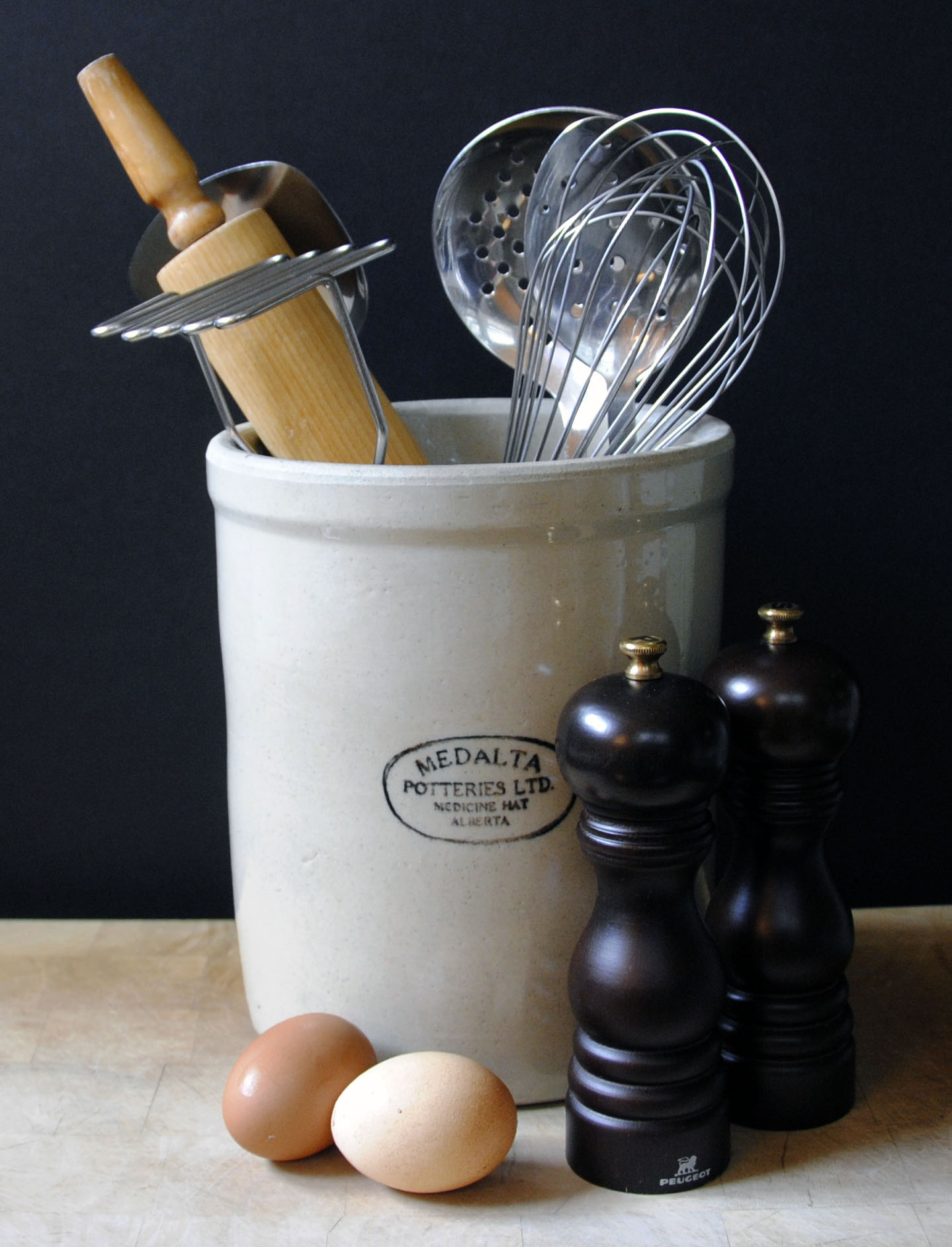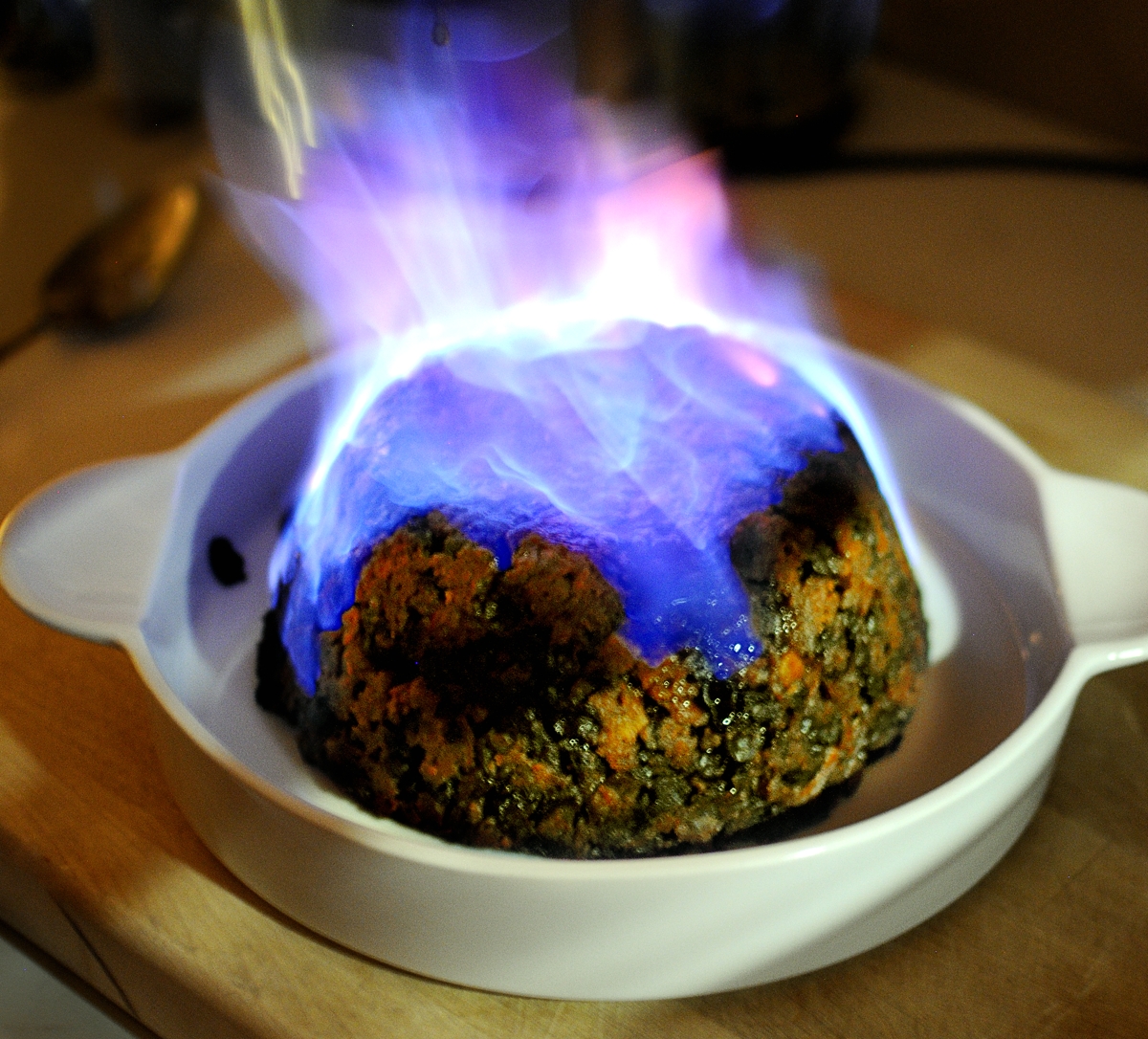I put together this list of information as a helpful source for a cook. I hope you will find some things that are of interest to you to keep on hand.
One of the most useful and indispensable things to have is a pepper grinder. Peugeot is a good brand.
Having two small electric coffee grinders. One for spices, one for grinding a large amount of pepper.
Another extremely useful tool is a rasp (Microplane) for grating citrus zests and for grating cheeses such as Parmigiano Reggiano
A baker should know how to correctly measure when making a recipe. Liquids should be measured using a glass measuring cup and solids are measured by weight which is why a scale is such an important kitchen tool. Buy a good instant read thermometer; you’ll never regret it.
Using potato starch for thickening sauces or gravies instead of flour. It works really fast and there is no floury taste. Blend the potato starch (1 – 2 Tbsp.) with some wine or other liquid (3-4 Tbsp.) that you have used in your sauce, whisk in; cook for a few minutes until it is thickened to your liking. You can adjust the amount of thickener required according to the volume of sauce you have.
Pasta cooking water is indispensable to finishing your pasta dishes. Cook pasta al dente, remove 1 cup of the water; drain pasta and stir into the sauce that you have simmering in a large sauté pan. Toss pasta and sauce to combine adding pasta cooking water a bit at a time if the sauce seems dry. This is a really good trick and helps the sauce adhere to the pasta.
A note about rice for Risotto. Arborio, Vialone Nano & Carnaroli are three types of used to make risotto. However, Vialone Nano and Carnaroli are considered the best choice. The Vialone Nano has smaller grains, cooks faster and absorbs condiments better, but the Carnaroli is less likely to get overcooked. Superfino, Semifino and Fino refers to the size and shape (length & narrowness) of the grains.
Dried Pasta brands I like to use: Rummo, Garofalo, Da Cecco. Brands from Naples or the Naples area such as La Fabbrica della Pasta di Gragnano and Gigi brand. When making mac n’ cheese I have found Italpasta, a top Canadian brand, elbows to cook up very well without collapsing and getting mushy.
A kitchen scale is a valuable piece of equipment in the kitchen. We simply could not cook without one. You can weigh the butter you need rather than trying to use a cup or tablespoon to measure. Trust me, it’s a lot faster and not messy. A digital one that weights in both Imperial and Metric is the best.
How to buy avocados. I buy them still hard, place in a paper bag and put in a warm place, such as on top of the fridge for a couple of days until ready to be used. Have also discovered once you cut the avocado rinse in cold water to prevent darkening.
Butter: Unless otherwise specified, unsalted butter is the choice for baking and cooking.
What to do with those leftover Parmigiano Reggiano rinds? No Italian Mama would throw these away. They are little tesoro’s/treasures to be added to soups, pasta sauces or whatever else you feel might benefit from the addition. Buy your Parmesan or Pecorino Romano in a piece, always a good idea to be grated as needed. As the cheese is not inexpensive, why buy pre-grated? There’s such a difference in freshly grated. When we are down to just the rind, we toss into a freezer bag and freeze. They sell rinds at Whole Foods for a couple of dollars for 3 or 4 rinds!
Freezing dill. I like to chop fresh dill fronds when it is in season; place in a jar with a tight lid and freeze. Anytime a recipe calls for fresh dill, voila!
Freezing parsley. If I have parsley I am not going to use up, I simply chop it and put into a small freezer bag. Comes in really handy when you need a couple of tablespoons for a stew, soup or whatever.
Freezing tomatoes. Some cooks can tomatoes. Me, call me lazy, I just can’t be bothered. So when I have really ripe ones around that I am unable to use, I just throw them in a plastic bag and fire them into the freezer. Peeling them is a cinch. Just run them under hot water and the skins will come off easily. Let thaw a bit, then chop and use for soups, sauces or whatever.
Store brown rice and grains in your freezer. They won’t go rancid for a really long time.
Handling Stinging Nettles. Always wear rubber gloves when handling the nettles before they are blanched. You won’t be happy if you don’t!
Blending Hot Liquids. A safety tip: let the liquid cool down for a minimum of 30 minutes to prevent any accidents. When the liquid is too hot, it will blow off the lid of the blender causing not only a huge mess but burns as well. Even when the liquid is warm, I still place a folded up tea towel on top of the lid and hold it while I am blending.
To bake lasagne, cover the lasagne with baking parchment then the foil before baking. The baking parchment prevents the lasagne from sticking.
When making a pasta sauce such as a ragu or tomato sauce for dinner, why not double the recipe (or even more). Place the amount you will need into freezer containers, label and freeze. You will pat yourself on the back later when in a hurry for a quick dinner and voila, there it is!
Many years ago when I was purchasing fresh basil I was given a great tip on how to keep it fresh….it really works! Fill a container with water, trim the ends of basil stalks, just as you would for flowers, place in the container, cover with a plastic bag, but do not seal it. Place on a windowsill or on the counter, NOT IN THE FRIDGE. It will keep for up to a week this way.
I use dried white beans as pie weights. They are a lot cheaper than purchased pie weights and can be reused. Just cool and store in a big jar.
I like to grate fresh ginger using a fine grater instead of chopping it. You get rid of the fibrous bits and it blends in better. You should use approximately half of what is required in the recipe doing it this way.
To prepare dried porcini mushrooms: measure the amount required for the recipe, then place in small glass bowl and cover with very hot water; let stand until soft, approximately 15 – 20 minutes. Remove from the soaking liquid and chop as per recipe directions. Stain the soaking liquid in a sieve that is lined with either 2 layers of rinsed cheesecloth or a moistened coffee filter. The soaking liquid can be used in your recipe if specified or frozen for a later use.
To core pears: use a melon baller. It works great and makes a quick, neat job of the coring. You can do the same thing with apples.
Don’t waste those celery leaves: instead of throwing into the compost, add some to salads, or stir into a soup, use in stews, use in your turkey stuffing, or as a garnish.






